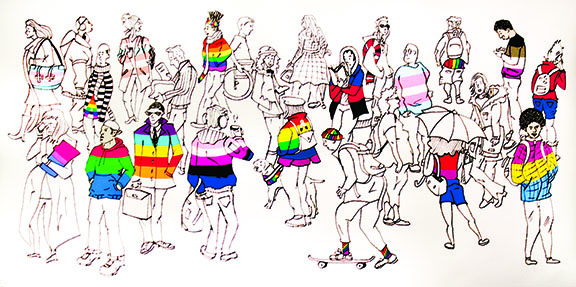If the City of Spokane cannot provide shelter and services to Spokane’s homeless population, then shouldn’t the homeless at least be allowed to care for themselves?
On Jan. 3 in a press release, the City of Spokane announced that “The City of Spokane has formalized a coordinated approach to address illegal homeless camping within the City. The approach is designed to provide individuals with opportunities for social service assistance before proceeding with an enforcement action.”
The basis of the City’s “enforcement action” is transient shelter or- dinances that only allow up to two permits of 14 days’ length each. The ordinance is more stringent for camping in public parks. How can the City and the community, in the dead of winter, refuse the use of public and private land to those who have no place to go? In 2011, the U.S. Department of Housing and Urban Develop- ment reported an estimated 1,273 homeless people within the City of Spokane. This included 274 fami- lies, 546 individuals, and 6 families without adults in the household. These are only estimates based on one-night counts which means that, if anything, the total count is even higher.
According to the 2009 Annual Update for Spokane’s Ten-Year Plan to End Homelessness, the top five most commonly reported causes of homelessness were lost job, family breakup, eviction due to non-paid rent, domestic violence, and mental illness.
In addition to people that are currently homeless, the 2010 Census counted 65,675 persons living below the Federal Poverty Line in Spokane County, including 40 percent of college students; at any given point a medical bill or unexpected death could plunge 40 percent of your classmates into homelessness.
The services for the homeless in our community are overtaxed to the breaking point. According to Shawn Antrim, a former volunteer coordinator who worked with Spokane’s homeless in 2010, House of Charity, Hope House, and St. Margaret’s homeless shelters are filled every night. Over 900 people were turned away in 2010 due to capac- ity issues just at those three shel- ters. The Salvation Army shelter is full to capacity every night. Hope House, a women’s shelter located in downtown Spokane, estimates that there 1800 homeless single women in Spokane; the facility only has 34 beds.
And, by the way, when faced with numbers that don’t add up I prefer to get my information from the source: experts and volunteers who work with the homeless every single day.
Many homeless individuals are unwilling to part with family to stay in gender-based housing such as Hope House. A significant portion of the homeless population have drug or alcohol addictions, which often mask deeper issues of mental illness; many shelters require sobri- ety, which means that a significant portion of the population is left without treatment or basic housing. So the homeless establish tent cities, a place to escape the cold for a few hours of sleep.
Maybe downtown isn’t the place, but if not there, then where? I know that Spokane’s tent cities are not a permanent solution, but by tearing down the Downtown tent cities the City of Spokane has evicted hundreds of people from relative safety and forced them to find other options in a city that has fewer and fewer options with each budget cut.
If the City is concerned about violence, drugs or crime in the tent cities, they should protect the areas with officers of the law. If the City can rent U-hauls to carry away the possessions of the homeless, they can rent port-o-johns too.
My question is why Spokane never reached out to its citizens or asked for volunteers to facilitate a temporary tent city on an ac- ceptable plot of land. I know my community; we would have answered.



